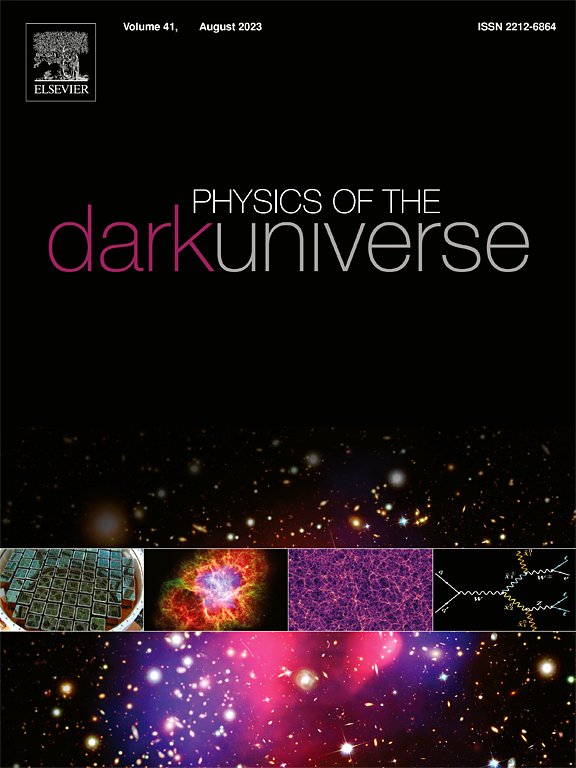通过弱引力等离子体透镜探测弗罗洛夫黑洞
IF 6.4
2区 物理与天体物理
Q1 ASTRONOMY & ASTROPHYSICS
引用次数: 0
摘要
本文利用高斯-邦尼特定理研究了弗洛洛夫黑洞弱引力透镜的性质。利用高斯-博内定理,确定了球平衡时空下黑洞的偏转角,并推导出高斯光学曲率。由此得到的光在弱场极限处的偏转角表明,光弯曲是一个拓扑的、普遍的过程。此外,我们确定了光在等离子体介质框架内的偏转角。此外,在等离子体介质和非等离子体介质的影响下,黑洞明确地证明了偏转角的行为。本研究还探讨了粒子动力学的相关性质,包括有效作用力和李亚普诺夫分量。因此,更大的偏转角度表示更大的光子频率。因此,参数η和q的增加,预测光子频率的降低,α和等离子体介质N的增加表明光子频率增加。李雅普诺夫指数表明了黑洞解的稳定性。在有效作用力参数η中,q和a表示弱引力,而参数α表示强引力。本文章由计算机程序翻译,如有差异,请以英文原文为准。
Probing the Frolov black hole via weak gravitational plasma lensing
This study investigates the properties of the weak gravitational lensing by using the Gauss–Bonnet theorem in the context of the Frolov black hole. By employing the Gauss–Bonnet theorem, we determine the deflection angle of the black hole for spherically balanced space–time and derive the Gaussian optical curvature. The resulting light deflection angle at the weak field limits demonstrates that light bending is a topological and universal process. Additionally, we determine the light’s deflection angle within the plasma medium’s framework. Furthermore, under the impact of plasma medium and for non-plasma medium, the behaviour of the deflection angle is demonstrated explicitly by the black hole. This research also investigates the related properties of particle dynamics including, effective force and the Lyapunov component. Hence, greater deflection angle depicts the greater photon frequency. Thus, increase in parameters forecasts decrease in photon frequency and increase in and plasma medium suggests increase photon frequency. Lyapunov exponent indicates suggests the stability of the black hole solution. In terms of effective force parameters , and suggests weak attraction of the particle whereas parameters suggests strong attractions.
求助全文
通过发布文献求助,成功后即可免费获取论文全文。
去求助
来源期刊

Physics of the Dark Universe
ASTRONOMY & ASTROPHYSICS-
CiteScore
9.60
自引率
7.30%
发文量
118
审稿时长
61 days
期刊介绍:
Physics of the Dark Universe is an innovative online-only journal that offers rapid publication of peer-reviewed, original research articles considered of high scientific impact.
The journal is focused on the understanding of Dark Matter, Dark Energy, Early Universe, gravitational waves and neutrinos, covering all theoretical, experimental and phenomenological aspects.
 求助内容:
求助内容: 应助结果提醒方式:
应助结果提醒方式:


